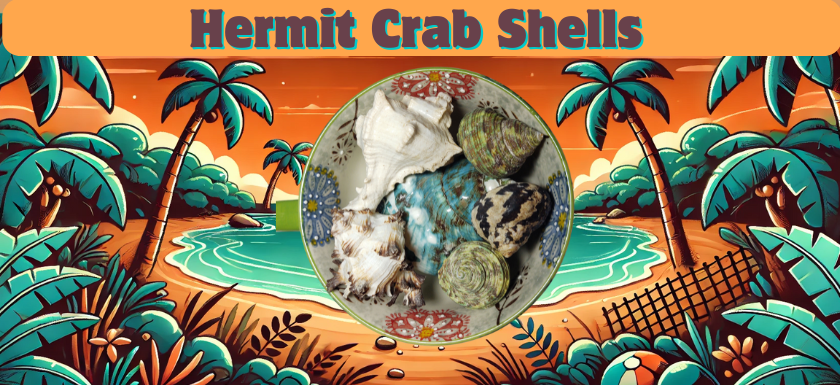written by Vanessa Pike-Russell
Recently we interviewed Amy Youngs, a young artist who has “collaborated with another artist, Matt Derksen, to design shells using 3D modelling programs.”
http://accad.osu.edu/~ayoungs/prototypes.html
Vanessa:
What prompted you to create prototypes of hermit crab seashells
Amy:
I am very interested in the ways that technology interfaces with the natural world and I when I was given the opportunity to work with the new technology of rapid prototyping, I really wanted to make something that would connect with my interest in living things. I remembered owning a hermit crab and I knew that they switched shells and I had been curious about how they make their decisions as to which shell they would select, so I decided to try to design some for them to choose from.
Vanessa:
What was the process you went through to get to the current prototype design?
Amy:
I collaborated with another artist, Matt Derksen, to design the shells using 3D modeling programs. We used Cinema 4D and Form Z software to do this, then emailed the computer files to John Marshall, the artist who had access to rapid prototyping machines which can “print” 3D computer files into objects. He and Cezanne Charles curated the Intersculpt 2001 Exhibition in Dayton Ohio, which fortunately gave artists access to this rapid-prototyping technology.

Vanessa:
What are the prototypes made from?
Amy:
Photopolymer, a kind of plastic that cures when a laser beam hits it.
Vanessa:
Why did you choose that material to make the prototype from?
Amy:
This was the technology I had access to. During the exhibition however, there was another kind of rapid prototyping machine running called a Thermojet, which uses wax to make objects, so there were 2 more shells made in this way by Matt Derksen. Those were not given to the crabs, though. I think Matt was attached to them and maybe a little worried that the crabs might get sand embedded in the wax.
Vanessa:
Have any of the hermit crabs moved into your seashell prototypes?
Amy:
No. This was a little disappointing at first, since I was really looking forward to seeing the crabs in the human-designed shells. But now I am glad because their rejection of the rapid-prototyped shells has been an interesting kind of humbling experience that I think we humans sometimes need. I am reminded that they know so much more than I do about what they need and this process is helping me understand what they do not need. I learned that they prefer smooth shell interiors, for instance, but the rapid prototyped shells have ridges that are probably not comfortable for them and there is an odor that they may not like. They have challenged me to make new versions. I had some handblown glass shells made for them, because I had read about that phenomenon of crabs moving into those miniature glass liquor bottles littered on the beach. So perhaps they like glass, or perhaps it is still not as good as a real shell. So far they have not selected any of the glass shells to move into. Perhaps they do not like that light goes through them, or perhaps they are too heavy…
Vanessa:
In the photo on your site I can see prototypes in the shape of fingers, what made you think of a finger-shaped shell?
Amy:
Since the project was conceived as a collaboration between crabs and humans, I thought it would be most interesting to see the crabs carrying around “human parts” like noses, fingers and thumbs. Also, I thought humans, who are known to enjoy seeing themselves reflected in technology, would also appreciate the crabs more if they saw images of themselves on the crabs.

We did make a video that showed what the crabs might look like if they did choose to move into our shells, though, which people thought was pretty funny. In the video, the crabs do not move around much, but every once in awhile a crab with a big toe shell walks though the scene.
Vanessa:
Will you be creating more prototypes?
Amy:
Right now I am caught up with other projects, but if I think of a new material that crabs might like better than plastic or glass, I might try that. If anyone has any suggestions, I’d be happy to hear them!
Vanessa:
If you were a hermit crab, which prototype seashell would you choose?
Amy:
Probably the thumb shell, because I think it is strangely elegant, although the nose shell is pretty stylish, too. I think the nostrils are too small though so I would have to be a “fashion slave” crab to squeeze into it.
Vanessa:
Thanks for agreeing to take part in this interview.
Amy:
You are welcome! Thanks for asking me.

